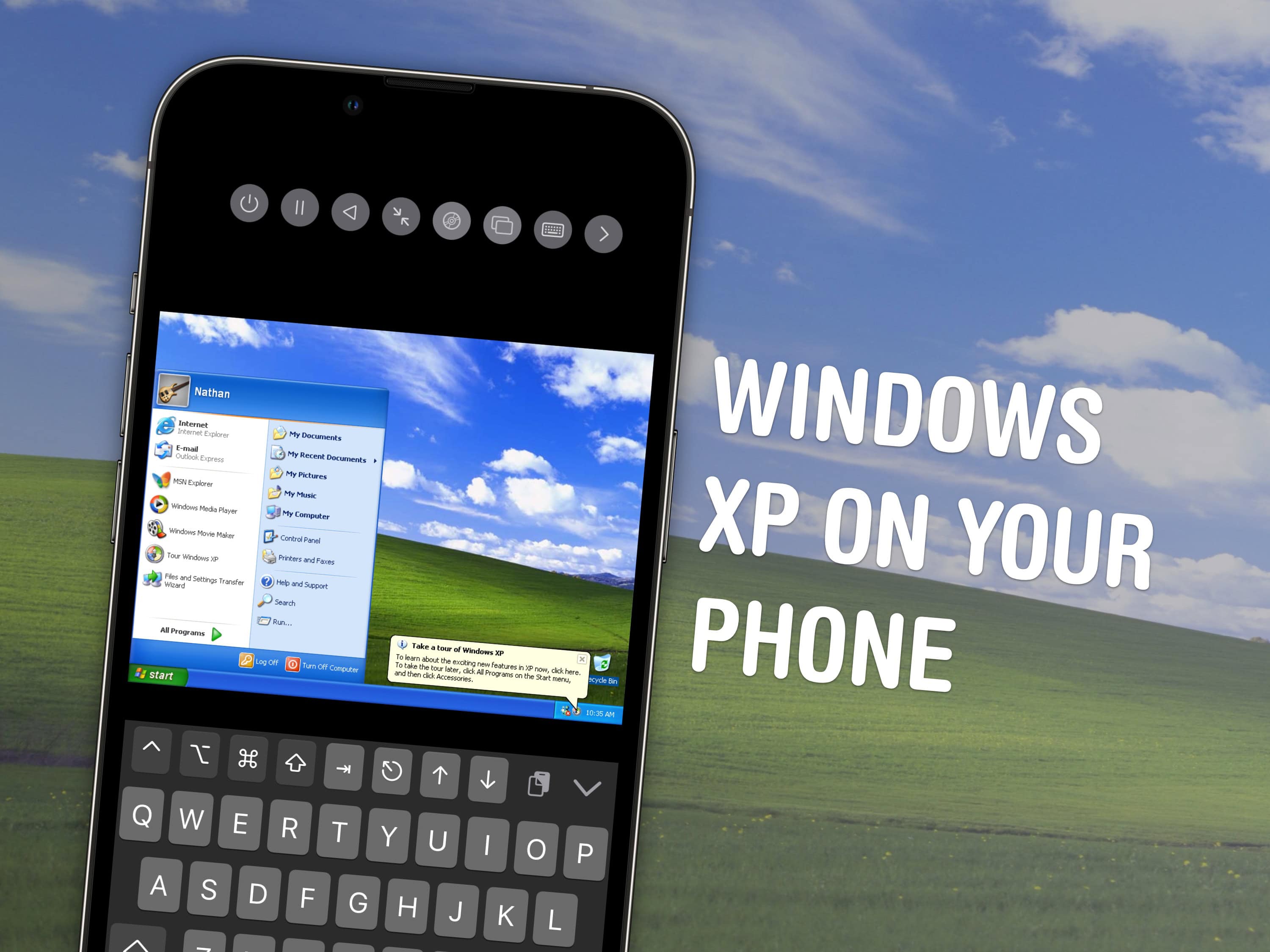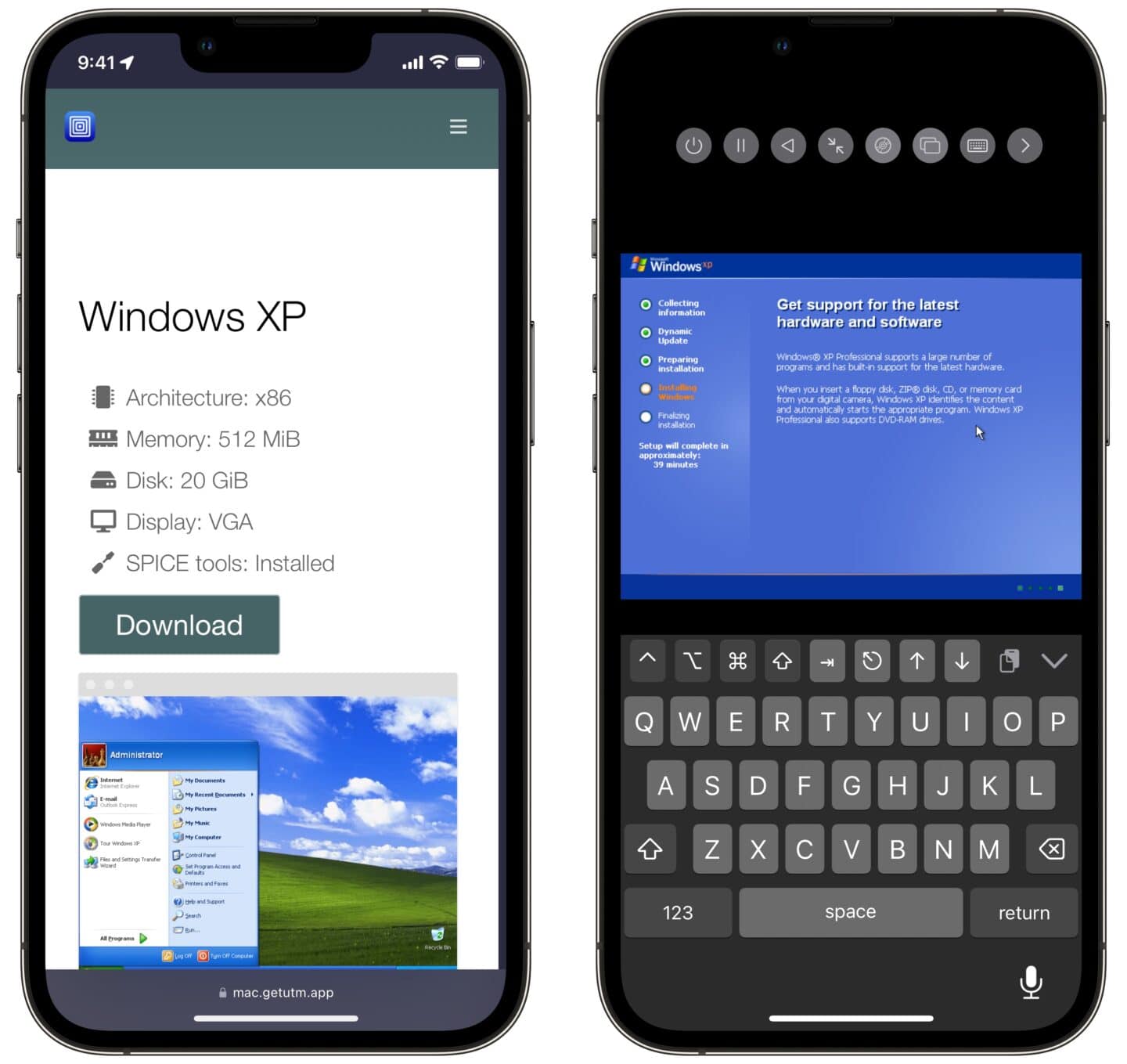
With the recently-released PC emulator UTM SE, you can now emulate Windows on iPad directly. You can revisit old PC games, just like how you can use Delta to play old Nintendo games. You can also install Linux. With Ubuntu, Debian or other versions of Linux, you can run all kinds of open-source software for getting real work or programming projects done.
But bad news: You can’t use it to run macOS Sonoma on your iPad. There’s some confusion about this, but unfortunately the long-held dream of turning your iPad into a Mac will have to wait for another day.
Setting it up is a little finicky — but the reward of seeing that classic Windows XP desktop on your iPad can make it all worth it. Keep reading to see how it works.
Emulate Windows on iPad with UTM SE
Table of Contents:
- Download UTM SE
- What you can run
- Add a Linux virtual machine
- Run Windows XP or Windows 7
- How to use UTM SE
Download UTM SE
The first step is to download UTM SE from the App Store. It’s completely free. If you’re in the European Union, you will soon be able to download UTM SE from AltStore PAL.
UTM SE only requires an iPhone or iPad running iOS 14 or iPadOS 14 or later, so you don’t need the latest and greatest device to use it. It does, however, take up quite a lot of storage space and RAM — specs that you usually don’t have to think about with your iPhone and iPad. If you want to play around with an old OS in UTM casually, you’ll be fine. If you regularly want to use it for productivity or gaming, you’ll want a device with at least 128 GB of storage and 8 GB of RAM.
Price: Free
Download from: App Store
What you can run in UTM SE
There are two common ways of running a virtual machine. The Mac can use a technology called Hypervisor, which makes running other virtualized versions of macOS or Windows on ARM very easy. This led to some confusion, because UTM on the Mac is allowed to use Hypervisor, but Apple doesn’t enable this technology on iOS and iPadOS. You cannot run modern operating systems on UTM SE.
UTM SE can emulate Intel x86, so you can comfortably run old versions of Windows — Windows XP, Windows 7, or even Windows 95. For newer software, you can pick from many distributions of Linux, which you could use for real software development purposes.
Older or obscure architectures like SPARC will not run in UTM SE on the iPhone and iPad. These architectures require an additional translation layer called just-in-time compilation, or JIT, which is also prohibited from the App Store. If you really want to emulate a Sun SparcStation, you can do so using an earlier version of UTM through the old AltStore.
Emulate Linux on iPad and iPhone

Screenshot: D. Griffin Jones/Cult of Mac
The easiest way to add a virtual machine in UTM SE is to use one of the pre-made machines from the UTM gallery. All the distributions of Linux (Debian, Fedora, Ubuntu, etc.) are available as one-click downloads. The operating systems are either open source or abandoned, so they can be freely redistributed by the UTM project.
From the UTM SE app, click the + icon in the upper left and tap Download prebuilt from UTM Gallery. Tap on the operating system you’d like to add, then tap Open in UTM. You’ll be redirected to the UTM SE app; confirm by tapping Download. If this flow doesn’t work, you can try force-quitting UTM SE, or by separately downloading the boot image to Files and importing it in UTM SE.
To boot the virtual machine, just tap the Play button.
Run Windows XP or Windows 7 on iPad and iPhone

Screenshot: D. Griffin Jones/Cult of Mac
Virtual machines that are set up to boot Windows XP or Windows 7 can be downloaded from the UTM gallery as well, but require an extra step. Although these older versions are no longer officially support by Microsoft, the company still owns the copyright, so these downloads are incomplete. They do not include the actual operating systems themselves. For that, you need to download a disk image — see the links below.
Tap on the file to open it in UTM SE. They set up and configure the machine, but you need to provide your own disk image. Luckily, they aren’t hard to find elsewhere — The Internet Archive has them available. Follow one of these links, then scroll down to find “Download Options” and tap ISO Image.
Once the ISO has downloaded, in UTM SE, tap CD/DVD to add the ISO file. It should boot right up. Installation will be rather slow, but the reward of running MS Paint on your iPhone will make it worth it.
How to use UTM SE
- Drag your finger around over the screen like a trackpad. Tap to click.
- When you boot up your virtual machine, you’ll see it centered on screen. To zoom in, move or resize the screen, you can pinch or drag with two fingers.
- To bring up a keyboard, turn off the machine or insert a CD, tap the floating arrow button to bring up the menu.
- The on-screen keyboard has additional buttons for modifier keys and arrow keys. The list is scrollable and has all function keys, home/end/page up/page down, caps lock, etc.
- This behavior is all customizable. From the UTM SE launch screen, tap Settings. You can also prevent the device from dimming the screen while the virtual machine is running, whether the virtual machine should keep running in the background when UTM isn’t active, set a frame rate limit to improve performance and more.






